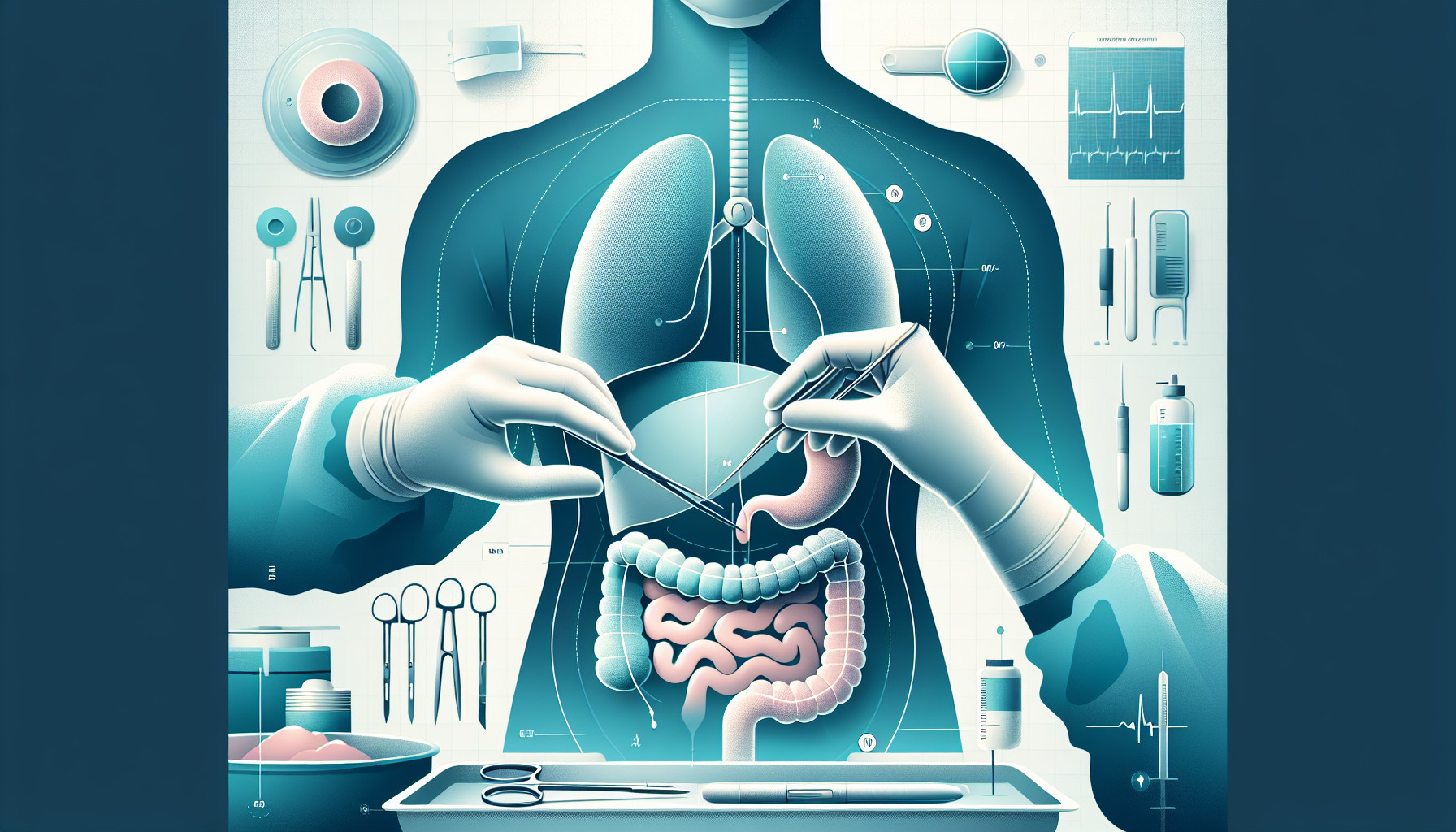Our Summary
This research paper discusses hiatal hernia, a common condition in which part of the stomach pushes up through the diaphragm into the chest. This often results in acid reflux, as the stomach acid washes back up into the esophagus.
The paper highlights that the diagnosis rate for hiatal hernia is low in China, due to limited diagnostic capabilities. Therefore, the authors stress the importance of improving diagnostic techniques to improve the quality of life for patients suffering from this condition.
Surgery has been a common treatment for hiatal hernia for many years, however, the paper suggests that surgeons need a better understanding of the condition and how to restore the function of the esophagus and stomach after surgery. The goal of surgery is not only to repair the hernia but also to restore the normal structure and function of the lower esophagus and stomach. This includes rebuilding the stomach’s natural barrier against acid reflux.
The authors emphasize that the key to successful surgery is restoring the structure of the gastroesophageal junction (where the esophagus meets the stomach), positioning the lower esophageal sphincter (a muscle that acts as a valve to prevent acid reflux), and ensuring the lower esophagus is the correct length. This can be achieved through a surgical technique called fundoplication and secure fixation to prevent the stomach from moving back into the chest.
Looking to the future, the authors predict that multidisciplinary teams, precise programs, and standardization will play increasingly important roles in the treatment of hiatal hernia. The paper reviews the history of diagnosing and treating hiatal hernia and looks forward to advancements in the near future.
FAQs
- What is the main purpose of surgery for hiatal hernia repair?
- What are some future prospects for the progress of hiatal hernia therapy?
- Why is the detection rate of hiatal hernia low in China and how can it be improved?
Doctor’s Tip
One helpful tip a doctor might tell a patient about hiatal hernia repair is to follow all post-operative instructions carefully to ensure proper healing and minimize the risk of complications. This may include avoiding heavy lifting, sticking to a specific diet, taking prescribed medications, and attending follow-up appointments with your healthcare provider. It’s important to communicate any concerns or changes in symptoms to your doctor promptly.
Suitable For
Patients who are typically recommended for hiatal hernia repair are those who experience symptoms such as heartburn, regurgitation, chest pain, difficulty swallowing, and belching, which are often caused by gastro-esophageal reflux. Surgery is recommended for patients whose symptoms are not adequately controlled with medication or lifestyle changes, or for those who experience complications such as esophagitis, Barrett’s esophagus, or strictures. Additionally, patients with large hiatal hernias that are causing significant displacement of the stomach into the chest cavity may also be candidates for surgery. It is important for surgeons to have a thorough understanding of the anatomy and function of the lower esophagus in order to properly repair the hiatal hernia and restore anti-reflux function.
Timeline
Before hiatal hernia repair:
- Patient may experience symptoms such as heartburn, chest pain, difficulty swallowing, and regurgitation of food
- Diagnosis is made through a combination of imaging tests such as endoscopy, barium swallow, and pH monitoring
- Patient may be prescribed medications to manage symptoms and reduce acid reflux
After hiatal hernia repair:
- Surgery is performed to repair the hernia, typically through laparoscopic techniques
- The surgery aims to restore the anatomy and function of the lower esophagus, as well as rebuild the anti-reflux barrier in the stomach
- Recovery time varies but most patients can resume normal activities within a few weeks
- Post-surgery, patients may need to make lifestyle changes such as avoiding certain foods, losing weight, and quitting smoking to prevent recurrence of the hernia and manage symptoms of acid reflux
What to Ask Your Doctor
- What are the potential risks and complications associated with hiatal hernia repair surgery?
- How long is the recovery period after hiatal hernia repair surgery?
- Will I need to make any dietary or lifestyle changes after the surgery?
- What can I expect in terms of long-term outcomes and potential recurrence of the hernia?
- Will I need any follow-up appointments or tests after the surgery?
- Are there any alternative treatment options to surgery for hiatal hernia?
- How experienced are you in performing hiatal hernia repair surgery?
- What is the success rate of the surgery in terms of relieving symptoms and improving quality of life?
- Will I need to stay in the hospital after the surgery, and if so, for how long?
- Are there any specific instructions or precautions I should follow before and after the surgery?
Reference
Authors: Chen S, Zhou T, Ma N. Journal: Zhonghua Wei Chang Wai Ke Za Zhi. 2018 Jul 25;21(7):734-739. PMID: 30051438
